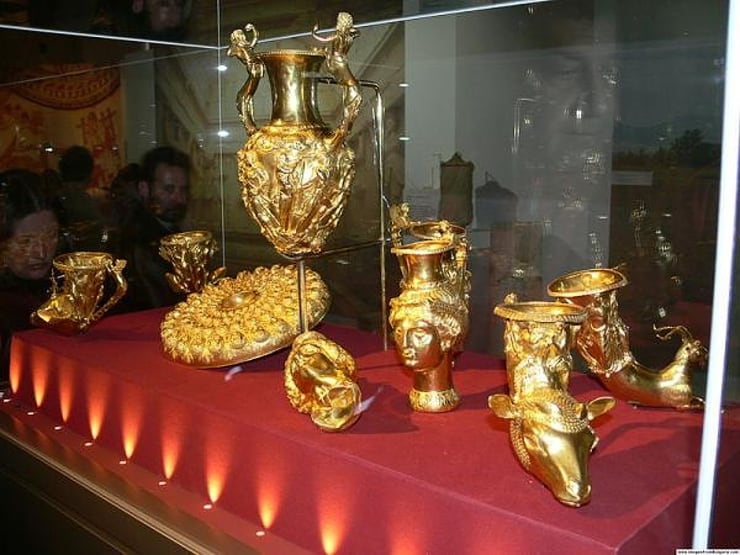30 Sep 2012 Thracian tomb with golden treasure
Categories: Calendar , Nálezy nejenom s detektorem kovů ve východní Evropě

The golden treasure was discovered by archaeologists in 2012 in Bulgaria. Bracelets with snake heads and a crown with animal motifs were found in a Thracian tomb. The burial site was near the village of Sveštari.
The treasure was in the largest grave, with a total of 150 in the burial site. The artefacts found date from the late fourth and early third centuries BC. They belonged to the Thracian tribe of the Getae, who were in contact with the Greeks.
The Thracians controlled much of the Balkans for several millennia. They had powerful warriors at their head. They inhabited the Balkan Peninsula and adjacent areas of Eastern Europe. They settled the territory named after later Roman provinces. Specifically, Thrace, Moesia, Dacia, Lesser Scythia, Bithynia, Mysia, Macedonia, Pannonia, and others. Eventually they were absorbed by the Roman Empire.
The ancient Greeks considered the Thracians the second most numerous people in the world, after the Indians. They disappeared in the 8th century, when they were assimilated by the Slavs. They spoke a Thracian or Dacian language.
The discovery of the artifacts surprised archaeologists. They didn't expect to find so many precious objects. "We discovered a wooden chest with charred bones and amazing gold artifacts, a fantastic treasure up in the wall of the excavation," said Diana Gerg, the head of the archaeological team.
In addition to the aforementioned objects, the archaeologists also discovered female figurines, a gold ring and a hundred gold buttons. According to Gerg, these were completely new designs in Thracian art, which they discovered for the first time.
Bulgarian archaeologists also found gold treasure in 2005 near the village of Dabene, 120 kilometres from Sofia. The depot included 15,000 small but exquisitely crafted gold objects. They were in the grave of a man who died 42 centuries ago.
"The dead man was cremated and a mound of earth was piled on top of his ashes and wealth, suggesting that he belonged to the social elite," said archaeologist Vasil Nikolov.
He added that so far there was only one find in all of Europe and the Middle East that matched these finds. Namely, the gold treasures discovered in Troy.
Sources: www.ct24.cz, www.argophilia.com, www.e15.cz, www.idnes.cz
The article is included in categories: